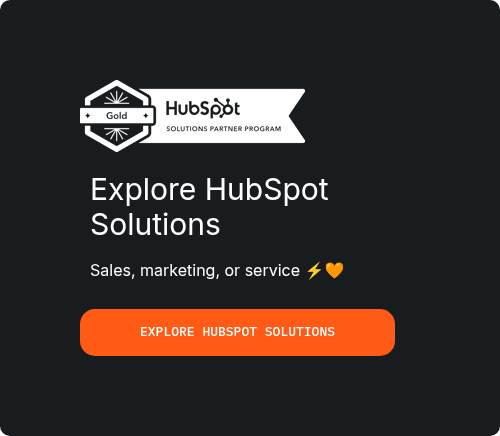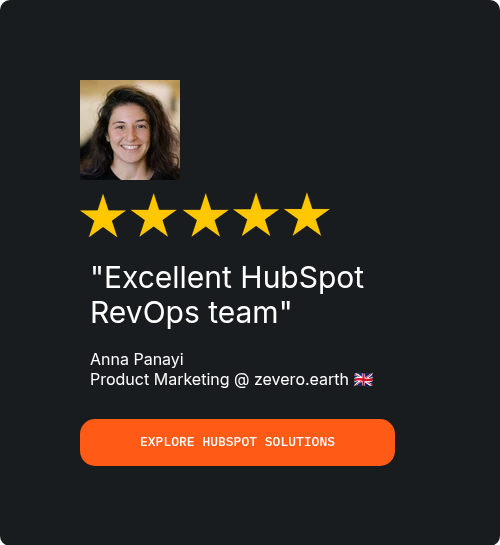6 Powerful HubSpot eCommerce Services To Grow Your Business Better!

Running an eCommerce business in today's competitive landscape can feel like a juggling act. You're managing inventory, processing orders, and trying to keep your customers happy. But on top of that, you're also expected to be a marketing guru, a sales expert, and a customer service wizard. The constant switching between different tools and platforms can be a major headache, leading to disconnected data, a clunky customer experience, and a struggle to personalize your marketing efforts. What if there was a way to bring all of these functions under one roof, creating a seamless and unified experience for both you and your customers? This is where a true online store management platform like HubSpot eCommerce comes in.
HubSpot has evolved from a marketing automation platform into a comprehensive suite of tools designed to help businesses grow better. With the introduction of its powerful eCommerce functionalities, HubSpot now offers a true all-in-one solution that brings together your marketing, sales, and service efforts with your online store. This integration provides a holistic view of your customers, allowing you to create highly personalized experiences that drive loyalty and revenue. This is the essence of a modern customer relationship management strategy. In this article, we'll explore six key HubSpot eCommerce services that can help you streamline your operations, enhance your customer relationships, and ultimately, grow your business. While the HubSpot platform is incredibly powerful, a successful implementation can be complex. Working with a knowledgeable partner can ensure a smooth and effective transition, and that's where a team of experts can make all the difference.
"The future of eCommerce is not just about selling products online; it's about building relationships. Integrated platforms like HubSpot are at the forefront of this shift, enabling businesses to deliver personalized experiences at scale. The ability to have a single view of the customer, from their first marketing interaction to their post-purchase support ticket, is a game-changer for any eCommerce business looking to build a loyal customer base. This is the power of a true customer relationship management platform." - Fawwad Mirza, Founder of Pixcell.io
1. HubSpot Commerce Hub: The Heart of Your eCommerce Operations
How to Set Up Your First Product in the HubSpot Product Library
HubSpot Commerce Hub Pricing Tiers
|
Feature
|
Free
|
Professional
|
Enterprise
|
|
Invoices
|
Yes
|
Yes
|
Yes
|
|
Payment Links
|
Yes
|
Yes
|
Yes
|
|
Subscriptions
|
Yes
|
Yes
|
Yes
|
|
Quotes
|
No
|
Yes
|
Yes
|
|
Closing Agent
|
No
|
Yes
|
Yes
|
|
E-signature
|
No
|
25/user/month
|
50/user/month
|
|
Commerce Analytics Suite
|
No
|
Yes
|
Yes
|
|
Advanced Quote Approvals
|
No
|
No
|
Yes
|
2. AI-Powered CPQ: Configure, Price, Quote with Intelligence
How to Create a Branded Quote with AI in HubSpot
Key Benefits of Using AI in the Quoting Process
3. Streamlined Billing and Payments: Get Paid Faster and Easier
How to Set Up Recurring Subscriptions in HubSpot
The Power of Integrated Payments
4. eCommerce Automation Workflows: Put Your Business on Autopilot
How to Create an Abandoned Cart Recovery Workflow in HubSpot
Must-Have eCommerce Automation Workflows
5. Seamless eCommerce Platform Integrations: Connect Your Entire Stack
How to Sync Your Shopify Store with HubSpot
A Comparison of Popular HubSpot eCommerce Integrations
|
Platform
|
Key Features
|
Best For
|
|
Shopify
|
Deep data sync, powerful marketing automation, abandoned cart recovery
|
Businesses of all sizes looking for a user-friendly and scalable eCommerce solution.
|
|
WooCommerce
|
Open-source flexibility, customizable, strong community support
|
Businesses that want complete control over their online store and have the technical expertise to manage it.
|
|
BigCommerce
|
B2B-focused features, multi-channel selling, strong API
|
B2B and enterprise-level businesses with complex eCommerce needs.
|





